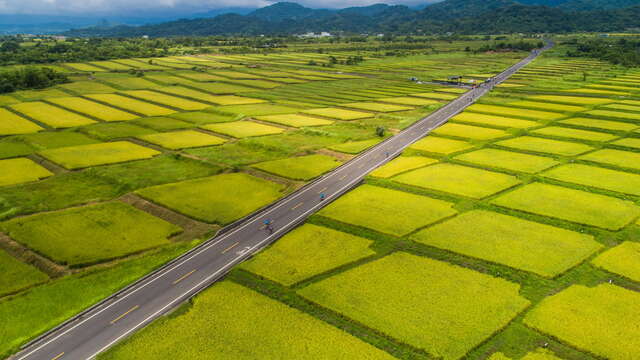Jin Gang Boulevard Introduction
Changguang Village is located in Changbin Township, Taitung County, formerly known as Ciwkangan, situated around the 85K mark of Taiwan Route 11. It is a beautiful village nestled between the mountains and the sea. Entering Changguang Village, along the Changguang Industry Road on East 13 Line heading west, the straight "Jingang Avenue" quickly comes into view. Standing on the avenue, endless terraced fields stretch out to the north and south, distinctly layered at the foot of Jingang Mountain and beside the Pacific Ocean. With the sea breeze blowing, the golden rice ears sway, creating waves in the fields that harmonize with the sound of the ocean, offering a vast and magnificent view that rivals the "Bolang Avenue" in the valley. The most famous feature of Jingang Mountain Community is "Jingang Mountain," located in the western Coastal Mountain Range; due to the clever interplay of topography and the effects of light and shadow, it resembles a giant gorilla standing atop the mountain, which is how Jingang Mountain got its name and became an important landmark for Changguang Community. On clear days, the shape of Jingang Mountain is particularly distinct, with its prominent features clearly standing out against the Coastal Mountain cliffs, serving as a guardian spirit for the village, quietly watching over its descendants. The history of the stunning terraced fields in the Changbin area is rich and longstanding. Like most indigenous villages along the east coast, Changguang Village is predominantly Amis, retaining many of its living customs and cultural celebrations, closely linked to the Amis culture in the nearby Datuan Port area, making it one of the larger Amis villages on the east coast. During the Qing Dynasty, the relocated tribespeople initially engaged in the cultivation of dry rice and millet; during the Japanese colonial period, the Amis learned rice farming techniques from the Kavalan people living around the nearby area of Cengzipu (also in Changbin Township). In just two years, the village fully transitioned to rice cultivation and developed irrigation channels with the labor force organized by age groups, leading to a significant increase in both the area of rice paddies and the population.





































